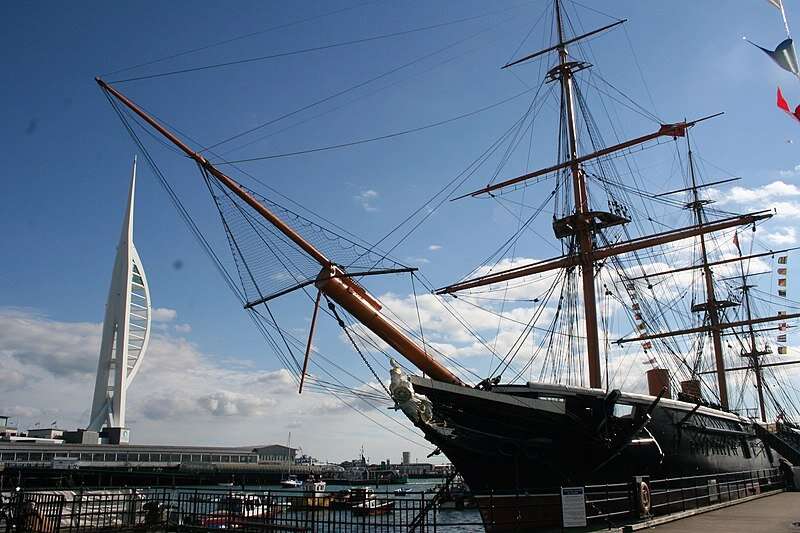Historic warships to be raided for missing climate data

Logbooks kept by sailors on board the UK warship HMS Warrior in the 1860s could soon help reveal a more complete picture of how Earth's climate has changed since pre-industrial times.
As on other naval ships of its era, Warrior's crew had begun regularly measuring air temperature, among other weather observations, to bolster their knowledge of winds and currents and make rudimentary forecasts in order to reach their destinations all around the globe.
These paper records will now be digitized by citizen scientists in a new Weather Rescue at Sea project launched today (26 October) by scientists at the University of Reading.
The resulting 1860s and 1870s temperature data from the Atlantic, Pacific and Indian oceans will expand existing long-term climate records, and allow computer analysis to improve comparisons between the climate now and before the Industrial Revolution in the early 19th century.
Professor Ed Hawkins, an NCAS climate scientist at the University of Reading who is co-leading the project, said: "Those on board ships sailing into historic battles or trying to reach unexplored lands would have been concentrating on the task at hand, but little did they know that the weather records they were keeping to help them on their journeys would be goldmines for scientists nearly 200 years later.
"The records we need to rescue are among the very earliest coordinated weather measurements and would have been penned by hand by sailors, yet they are no less valuable now in the age of supercomputers to understanding climate change."
Praveen Teleti, an NCAS research scientist at the University of Reading and co-lead of the project, said: "Transcribing these records would take one person many lifetimes, but with the help of an army of volunteers we can complete the task. This is a chance for members of the public to be part of a collective mission to use history to help us understand the future of our planet."
HMS Warrior
HMS Warrior, a 40-gun, steam-powered armored frigate, was built around 1860 at the start of an arms race between the UK and France that triggered a rapid advance in the design of naval ships. It is now a tourist attraction as a museum ship in Portsmouth Historic Dockyard.
Among other vessels, Weather Rescue at Sea volunteers will also explore records from ships involved in the Shimonoseki Campaign of 1863-64. This saw naval forces from Great Britain, the Netherlands and the United States engage in a series of battles with Japanese ships over control the Shimonoseki Strait—a strategic passage for trade in Japanese waters.
The records rescued from the logbooks will help fill in gaps in 19th century temperature records, which are currently relatively poor for the 1860s and 1870s compared to other decades since 1850.
The Weather Rescue At Sea project is the data rescue component of GloSAT, a project funded by the Natural Environment Research Council to develop and analyze a climate record extending back to the 1780s, using air temperature observations recorded across land, ocean and ice.
The new GloSAT temperature record will give a longer and more consistent picture of changes to global surface air temperature, and advance understanding of climate change since the late 18th century.
The Weather Rescue At Sea project is the data rescue component of GloSAT, a project funded by the Natural Environment Research Council to develop and analyze a climate record extending back to the 1780s, using air temperature observations recorded across land, ocean and ice.
The new GloSAT temperature record will give a longer and more consistent picture of changes to global surface air temperature, and advance understanding of climate change since the late 18th century.
Weather Rescue at Sea follows previous successful citizen science projects led by Professor Hawkins, which have collectively digitized many millions of pieces of archived weather data. These include observations made at a remote Victorian weather station atop Ben Nevis in Scotland, and rainfall reports from as early as the 1820s—the latter of which saw more than 15,000 volunteers work through more than 5 million records in just a fortnight.
Volunteers can sign up for Weather Rescue at Sea at rdg.ac/seaweather.
Provided by University of Reading




















